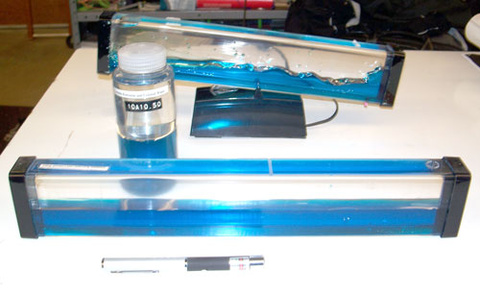Breadcrumb
6A44.53 - Total Internal Reflection - Two Liquids

Code Number: 6A44.53
Demo Title: Total Internal Reflection - Two Liquids
Condition: Excellent
Principle: Critical Angle and Total Internal Reflection
Area of Study: Optics
Equipment:
Wave machine bodies, Waves in a Bottle.
Procedure:
The interface at the boundary of two immiscible liquids will appear to be a mirror at certain viewing angles. Use a laser to show that there is total internal reflection at those angles.
References:
- Robert Ehrlich, "P.6, Total Internal Reflection at a Two-Liquid Interface", Turning The World Inside Out, p. 180.